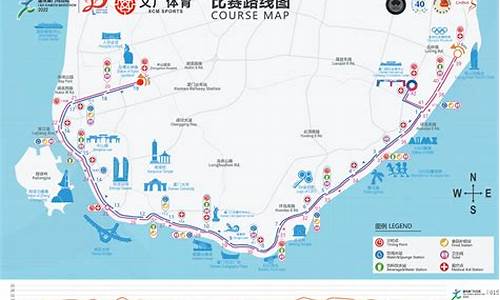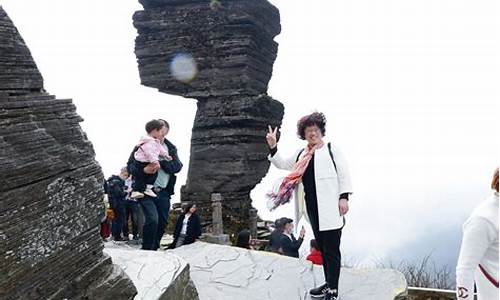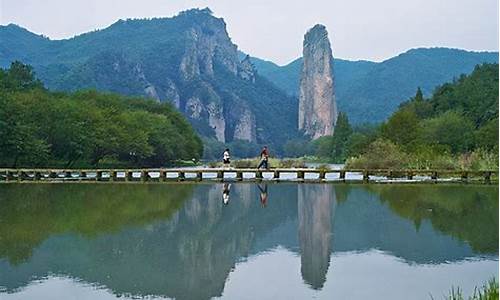武汉景点英语介绍简短_武汉景点英语介绍

Wuhan, composed of the three towns of Wuchang, Hankou, and Hanyang, is the capital of Hubei Province. The three towns, separated by the Yangtze and Hanshui rivers,a re linked by bridges, and because these municipalities are so closely connected by waterways, Wuhan is also called the "city on rivers." Being the largest inland port on the middle reaches of the Yangtze River and a major stop on the Beijing-Guangzhou Railway, Wuhan is one of China‘s most important hubs of water and rail transportation and communications.
Wuhan has an old history and rich cultural traditions. It began to prosper as a commercial town about two thousand years ago, when it was called Yingwuzhou (Parrot beach). From the first century to the beginning of the third century, the towns of Hanyang and Wuchang began to take shape. During the Song Dynasty (960-1279), the area became one of the most prosperous commercial centers along the Yangtze River. By the end of the Ming Dynasty (1368-1644), Hankou had become one of the four most famous cities in China. Today, Wuhan is the political, economic, and cultural center of Central China. It boasts of one of China‘s leading iron and steel complexes -- the Wuhan Iron and Steel Corporation. Wuhan is also a city with a strong revolutionary tradition.
East Lake
This charming spot is in the Wuchang district of the city. It has a vast expanse of water (thirty- three square kilometers), with winding banks and willow trees. The surrounding area is divided naturally into several scenic areas among which Millstone Hill (Moshan) is the most attractive with flowers blooming all the year round-orchids in spring, lotus in summer, osmanthus in autumn, and plum blossoms in winter. The many beautiful buildings at the edge of the lake include Land of Water and Cloud (Shuiyunxiang) which serves as a teahouse, Listening to the Waves Tower (Tingtaoxuan), where the visitor can get a panoramic view of the lake, Poetry-Reciting Pavilion (Xingyinge), Lakeside Art Gallery (Binhuhualang), the Memorial Hall of Qu Yuan (340-278 B.C.), infinite Sky Tower (Changtianlou) which can accommodate a thousand visitors for tea, and Lu Xun Square. The park is dotted with lotus and fish ponds, as well as fruit trees (pear and orange) and luxuriant bamboo groves. The nineteen- meter-high Lake View Pavilion (Huguangge) stands on an island in the lake and is a fine vantage point from where to view the entire area. Gulls and swan geese which gather at East Lak ein winter are another attraction to visitors here.
Guiyuan Temple
This four-hundred-year-old Buddhist temple stands in a wooded area of the Hanyang district. The picturesque compound of the temple includes a huge hall that houses five hundred skillfully scrlptured arhat statues, each different from the other in bodily posture and facial expression -- sitting, sleeping, laughing, angry. The temple also boasts of a rich collection of stone carvings, paintings, and Buddhist scriptures.
Tortoise Hill (Guishan)
Guishan, which looks like a huge tortoise, is in the north of Hanyang across the Yangtze River from Snake Hill. With the Hanshui River also flowing by in the north, the hill was a strategic point in ancient wars. It is said that when King Yu in primitive age came here to tame the river, he was confronted by a water demon whom he fought for several years without success. Finally, a tortoise from Heaven arrived and defeated the demon, which turned into Snake Hill are many temples, pavilions, and terraces built over the dynasties, including King Yu‘s Rock by the side of the river, King Yu‘s Temple, the carvings on cliffs, and the Ancient Music Terrace (Guqintai).
Snake Hill (Sheshan)
Sheshan has the shape of an immense snake with its head drinking from the Yangtze River and its tail cutting into the eastern part of the city. This hill used to be an important military fortress together with Tortoise Hill on the opposite bank of the Yangtze River. The best-known site on the hill is perhaps the Yellow Crane Tower (Huanghelou), which is associated with an old legend about a Taoist priest flying to Heaven on the back of a yellow crane. Remaining historical buildings include the Shenxiang Pagoda, Yue Fei Memorial Pavilion, Baobing Hall, the Taoist Evergreen Temple, and Yongyue Terrace, and there are many important stone carvings as well.
Wuhan Yangtze River Bridge
Completed in 1957, this engineering marvel is 1,670 meters long and has one level for automobiles and another for trains. The construction of this bridge provided direct rail service between north and south China for the first time.
晴川阁 the Qingchuan Pavilion
龟山 Tortoise Hill
古琴台 the Ancient Guqin Terrace
蛇山 Snake Hill
首义园 Wuchang Uprising Park(首义实指辛亥革命武昌起义)
彭刘杨路 Pengliuyang Road
其它的著名景点:
黄鹤楼 the Yellow Crane Tower
东湖 East Lake
湖北省博物馆 the Hubei Provincial Museum
注意:道路、景点属于专有名词,每个单词首字母要大写,但前面的定冠词the 不用大写。在国外的景点中表示山、湖的专有名词前不加定冠词the,但是中国人习惯在山、湖前加the,如东湖,很多人说the East Lake
景点是不可能有翻译工具的,翻译工具都是断章取义,只能参考一下。
声明:本站所有文章资源内容,如无特殊说明或标注,均为采集网络资源。如若本站内容侵犯了原著者的合法权益,可联系本站删除。











